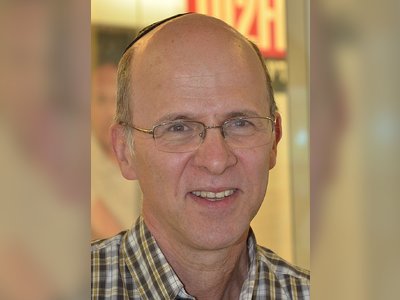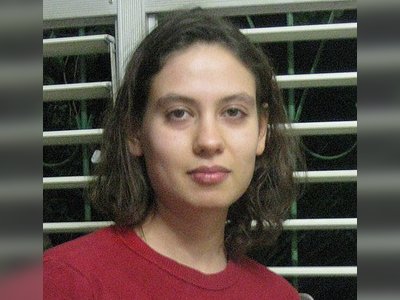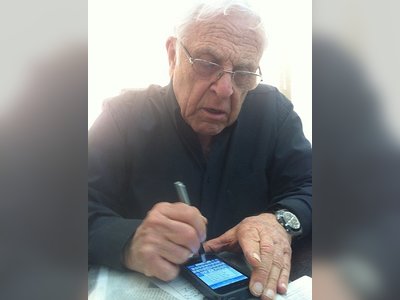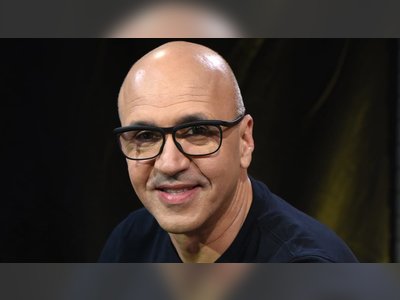Title: Beracha Habbas: A Pioneer Israeli Journalist and Educator
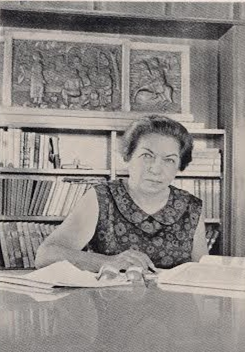
Beracha Habbas-Hacohen (January 20, 1900 – July 31, 1968) was a renowned Israeli journalist, editor, writer, and educator. She was a founding member of the children's newspaper "Davar L'Yeladim" and a pioneer in book publishing for children. She also authored the first biography of David Ben-Gurion. Habbas-Hacohen was the first female journalist during the early days of Jewish settlement in Israel.
Childhood and Adolescence
Beracha Habbas was born on January 20, 1900, in the town of Alytus, situated along the banks of the Neman River, in the Suwałki Governorate of the Russian Empire (now in Lithuania). She was the sixth of seven children born to Nechama Devorah and Yisrael Habbas, a devoutly religious family with ties to the Zionist religious movement in the Land of Israel. Her younger brother, Nachman, would later become a pioneer in the tanning industry in Israel.
In 1907, the family emigrated to the Land of Israel during the Second Aliyah, with the intention of providing their children with a religious education combined with agricultural work. However, they faced challenges finding a suitable framework for their children's education.
Beracha's father established a religious newspaper called "Iton HaYesod" (The Foundation Newspaper) and personally taught his daughters chapters from Pirkei Avot (Ethics of the Fathers), the Chumash, and duties of the heart (Chovot HaLevavot). However, Beracha and her sisters chose to distance themselves from the strictly religious way of life.
The family settled in Petah Tikva and later Haifa, where Beracha attended the Alliance School and later moved to Tel Aviv, where she studied at the Girls' Public School in Neve Tzedek. When her eldest sister wanted to study in the first cycle at the Beit HaMidrash LeMorot (Teachers' Seminary), their father initially opposed it but eventually relented.
This decision paved the way for Beracha to pursue her own teaching career, and she attended the WIZO Teachers' Seminar in Neve Tzedek, where she studied until 1921, under the guidance of her admired teacher, Yosef Chaim Brenner.
In 1919, while still in the seminary, she joined the Poalei Agudat Yisrael movement. A year after completing her studies at the seminary, she traveled to Leipzig, Germany, to study education and psychology at the local university. In 1933, she went to Vienna, Austria, to pursue further pedagogical studies.
Educational Work
During her final year at the WIZO Teachers' Seminar, Beracha began teaching boys who attended the Neve Shalom Club, a youth center in her neighborhood. After receiving her teaching certification in 1921, she taught girls and boys on behalf of the Cultural Committee of the Labor Movement. Her educational work primarily focused on the underprivileged populations of Jaffa and Tel Aviv, and she also documented her experiences through her writing.
Her first published story, "HaTchilah" (The Beginning), described the activities of the Neve Shalom children's home in Jaffa, an institution that aided needy families and helped their children with their studies. It was published in the "HaHilah" (The Beginning) pamphlet in 1921, by the Cultural Committee of the Histadrut.
She was among the founding staff of the first school for working youth in Tel Aviv and also developed curriculum plans for these students. In 1924, she taught at the Kinneret School and was involved in agricultural work in the Nachalat Yehuda settlement. Together with Beryl Katznelson, she established the youth center of the Histadrut and was responsible for writing and publishing educational materials.
A few months after she left for Vienna to study, she was called to Warsaw, the capital of Poland, to assist in publishing reading booklets for youth and newspapers on behalf of the pioneering movement.
Beracha's early writings were published in the literary journal "HaDin," edited by Yaakov Rabinovich. Upon the establishment of "Davar," the flagship newspaper of the Histadrut in June 1925, she became part of its editorial staff. Through the newspaper's founder and editor, Beryl Katznelson, she established connections with key figures in the Jewish settlement, including David Ben-Gurion, Moshe Sharett, Zalman Shazar, Rachel Katznelson-Shazar, Golda Meir, David Remez, Moshe Bilitzky, and Abba Hushi.
In 1935, she edited the "Davar LaAliyah" (Davar for Immigration) supplement. She wrote numerous articles on various topics, including social issues in the Jewish settlement, labor colonization, the establishment of new Jewish settlements, Zionist congresses, immigration, the Palmach, and the Haganah. In 1931, she joined forces with Yitzhak Zeev, and together with artist Nahum Gutman, they were among the founders of the newspaper "Davar LeYeladim" (Davar for Children), where she wrote columns and short stories. After her passing, Uriel Ofek wrote, "For hours, we would sit and discuss each new booklet: What should we tell about everything happening in the big world? How do we describe the toil and sweat of the pioneers? The innovations in wisdom and knowledge? What should every person understand, and what should every Jewish child know?"
Field Journalist
Her coverage of the Great Arab Revolt for "Davar" significantly elevated her journalistic career, making her the first female military correspondent in the Hebrew press in Israel. She reported on the construction of the Homa and Migdal Shapira settlements, the Northern Fence, and sent dispatches from the borders of Lebanon and Syria. These experiences were documented in her book, "Ma'arot Tartzo" (Events of 1929). During World War II, she toured the country and its neighboring areas, interviewed Holocaust survivors, and published their stories in books.
Simultaneously, she continued writing for "Davar LeYeladim" and participated in producing new supplements for the newspaper, such as "Davar HaShavua" (Davar Weekly) and "Davar LaGolah" (Davar for the Diaspora). In 1946, she covered the Zionist Congress in Basel, Switzerland, and extended her trip to report on activities in the displaced persons' camps in Italy.
Author, Editor, and Biographer
Her numerous books documented the history of the labor settlement, the activities of the pioneering leaders, the Aliyah Bet, the early days of the state, and the persona of the new Jewish Jew. In addition to her journalistic duties, she was involved in book publishing as an editor for children's and youth literature. Out of four "libraries" published by the Histadrut, she was responsible for "Shacharut" (for youth) and "Leilad" (for children).
As an immigrant during the Second Aliyah and a journalist, she earned the respect of David Ben-Gurion, who often invited her to discussions and interviews. In 1965, she published her memoirs, "Memories of 40 Years of Journalism," which documented her personal and professional encounters. In 1967, she authored the first biography of Ben-Gurion, shedding light on his complex personality, leadership style, and political career. Her writing not only chronicled history but also contributed to shaping the collective memory of the Israeli people.
Legacy
Beracha Habbas-Hacohen made significant contributions to Israeli journalism, education, and literature during her lifetime. Her dedication to documenting the history of the Jewish settlement in Israel, her pioneering work in children's literature, and her role as a female journalist during a time when it was rare are all part of her enduring legacy. Her writings continue to be studied and appreciated for their historical value and literary merit, and she remains a trailblazing figure in the cultural and educational history of Israel.
- ברכה חבסhe.wikipedia.org
